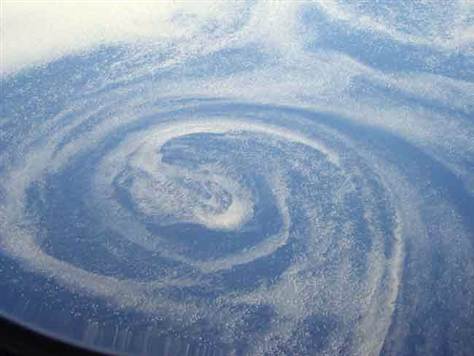Overview


MESO-CLIP is funded by Natural Environment Research Council (NERC). The full research proposal can be found here.
The main goal of MESO-CLIP is to study the impact of mesoscale ocean eddies on the climate variability and predictability. Satellite observations have shown that ocean mesoscale eddies are ubiquitous in the world oceans. These eddies are the oceanic counterpart of weather systems in the atmosphere (images above) and they occur in regions of baroclinic instability. Eddy-rich regions in the oceans are typically characterised by sharp temperature contrasts in water masses. Prominent examples for such regions are the Antarctic Circumpolar Current (ACC), the eastward extensions of the Gulf Stream and of the Kuroshio as well as the Agulhas retroflection (see animation below). The diameter of mesocale ocean eddies varies from a few hundred km in the Tropics to a few tens of km around Antarctica and in the Nordic Seas.
It is widely acknowledged that mesoscale ocean eddies play a major role in the mixing and transport of water properties. However to what extent these eddies project onto the large scale ocean circulation is far from fully understood. Some research has also suggested that mesoscale ocean eddies may leave an imprint on the variability of the atmosphere.
Mesoscale ocean eddies can be simulated in numerical models of the ocean if the resolution is high enough. For horizontal grid resolutions of about 1/3° or finer ocean models become ‘eddying’, i.e., mesocale features start to be present in the model solutions. The next generation of coupled climate models currently under development (i.e., Earth Simulator, HiGEM, CM2.6, HadGEM3-H) use eddying ocean models. With ocean mesoscale eddies these models contain an additional source of uncertainty which is far from fully understood. Small perturbations to the initial conditions (temperatures, salinity, velocities) lead to a decorrelation of the ocean mesoscale eddy field and the exact time and locations when and where an eddy will form cannot be predicted. The overarching goal of MESO-CLIP is to assess how this uncertainty related to ocean mesoscale eddies affect climate predictions on submonthly to decadal timescales. To achieve this goal we will use numerical models to address the following key questions:
- How do mesoscale ocean eddies affect the predictability of the ocean and of the coupled ocean-atmosphere system?
- How large is the imprint of mesoscale ocean eddies on the oceanic, atmospheric and coupled ocean-atmosphere variability?
- What are the dominant timescales of variability affected by mesocale ocean eddies?
To answer the questions I-III we will use a hierarchy of numerical models: (i) the Nucleus for European Modelling of the Ocean ( NEMO, Madec, 2008), and (ii) the high resolution version of the Hadley Centre Global Environment Model version 3 (HadGEM3-H, Hewitt et al., 2010). (iii) the Quasi Geostrophic Coupled Model (Q-GCM, Hogg et al., 2003).





